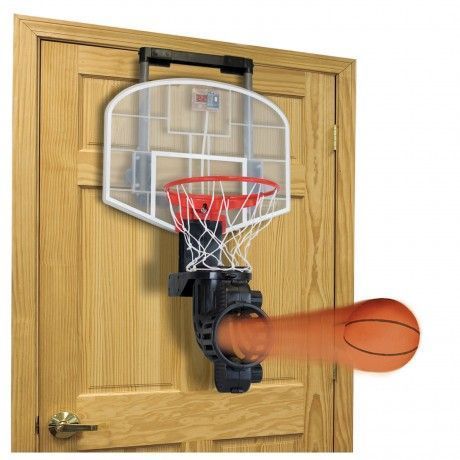Home »
Misc »
How to move a basketball hoop filled with water
How to move a basketball hoop filled with water
How To Move a Basketball Hoop Filled With Sand (or Water)
If you love playing basketball, there is nothing better than adding a basketball hoop to your backyard or driveway.
While portable basketball systems are increasing in popularity, moving them can be a challenge. This article will offer you some advice on how to move your sand-filled basketball hoop.
Portable Basketball HoopsPortable hoops are built on A-shaped frames and have a base that you weigh down for support and stability. You could either use sand or water to weigh your portable hoop down.
Contrary to basketball hoops cemented into the ground, portable hoops have several advantages, including their movability.
Should You Use Sand or Water in Your Basketball Hoop?Filling your portable hoop with water is easier and cheaper because water is readily available.
Using water is also great if you intend to move the hoop around a lot because it is not difficult to remove the water.![]()
The problem with using water is that once it starts evaporating, your base will become less stable. Also, should your hoop's base crack, the water could begin leaking without warning.
The above reasons are why more and more people use sand to secure their portable hoops. Sand offers increased stability as it weighs more than 13 pounds per gallon, while water only weighs a little over eight pounds per gallon.
Considering that most portable hoop bases can hold up to 35 gallons, you can understand the amount of support you can get when you fill them with sand. Also, it is easier to notice when the sand begins to leak.
How Much Sand To Use for the Basketball Hoop BaseMost portable basketball hoops have a base that can hold 35 gallons.
If you fill such a base with sand, buying ten 50-pound sandbags from any home-supply store will do. If your hoop base can hold more than 35 gallons, adjust the amount of bags accordingly.
After you have positioned your hoop in your preferred location, remove the fill plug by turning it counterclockwise, then add sand to the base using a funnel.
Every once in a while, stop pouring the sand and tilt your base to force the sand forward and ensure that you fill the base evenly.
Once it is full, thread the plug into the hole and tighten it by hand. Hand-tightening the plug will make it easier to remove when the time comes to empty the base.
Moving a Basketball Hoop Filled With SandWhile the additional support sand offers is significantly beneficial, it will, unfortunately, make it more challenging for you to move your basketball hoop.
The effort and costs that are sometimes involved when moving your portable hoop might make you question whether the task is a worthy one.
If you are fortunate, your basketball hoop will have wheels on its base that will make moving it more manageable.
If it does, place one foot straight up and against the base's middle section so that the top of your foot is resting along the base while the ball of your foot touches the ground.
Using both your hands, grab the top of the A-frame below the rim. While keeping your feet in place, pull the hoop towards you.
Remember not to pull too fast to avoid toppling the hoop over. Keep pulling the hoop towards you until you lift the back of the base off the ground.
Remove your foot from the base and slowly walk the hoop to where you want to position it. Seeing that the wheels are often only made to go forward or backward, you will need to turn the hoop 90 degrees if you want to move it sideways.
What To Keep in Mind When Moving Your Basketball HoopWhile your portable basketball hoop is always moveable, it will be a bit more challenging if it does not have wheels. Here are a few things to keep in mind when dealing with such hoops:
- Assistance: Because sand is heavier than water, you will probably need help to move your sand-filled basketball hoop.
- Collapsible: Though some hoops do not have wheels, they might be collapsible or foldable.
 Refer to your instruction manual to check if your hoop can collapse into a more manageable frame.
Refer to your instruction manual to check if your hoop can collapse into a more manageable frame. - Non-Collapsible: If your hoop is not foldable or collapsible, you will need to hire professional help to move the basket, especially if you intend to move it to an entirely new location. Remember that a standard basketball hoop is more than 10 feet high and cannot fit in most moving trucks.
- Disassembly: If it is possible, disassembling some of the pieces could make your job easier. Consider removing the backboard from the pole and the pole from the base. You could then move the base around and reassemble the pieces later.
- Base: Although emptying the base will make the work easier, it is challenging. The capped holes used to fill and drain the base are generally on top, meaning that you will have to flip the structure upside down. You could, however, try reducing some of the weight by turning your hoop on its side.
- Protection: If you are fortunate enough to have a hoop that can collapse or fold to a more manageable size, you will only need minimal assistance to load it onto a moving truck.
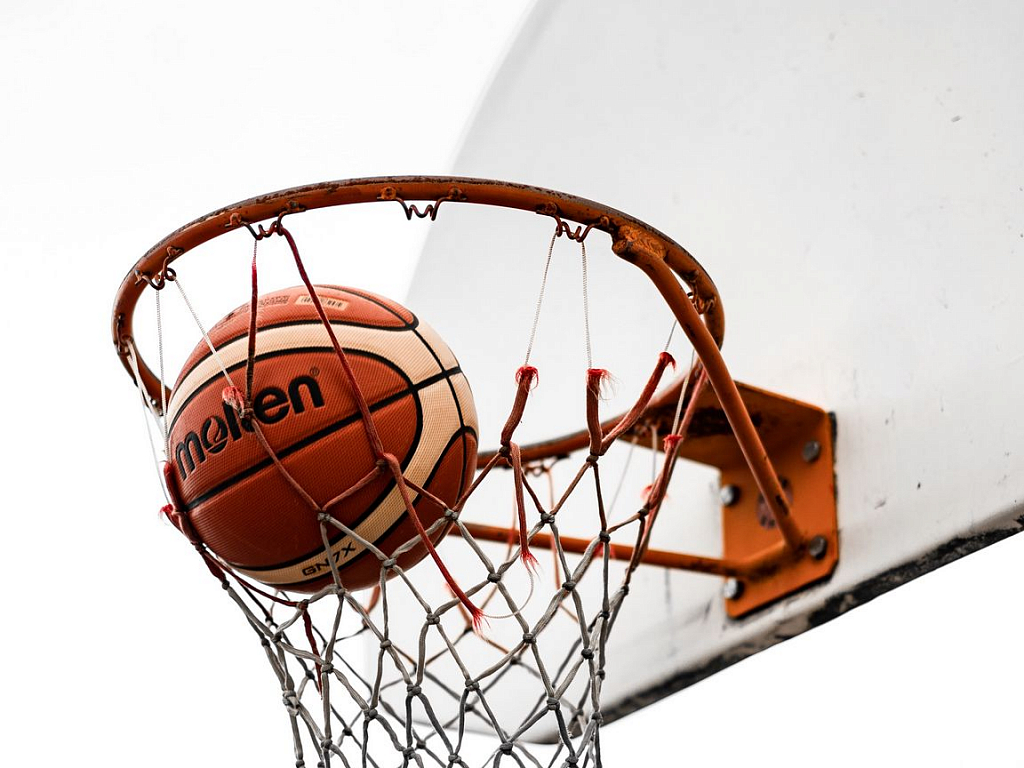 Remember to cover the hard metal structure with packing blankets to protect it from scratches or smashing into other items.
Remember to cover the hard metal structure with packing blankets to protect it from scratches or smashing into other items.
Final Word of Advice: On Moving Hoops Filled with SandAs we have already explained, moving a basketball hoop filled with sand is no easy task. That is why, as always, safety must come first.
Even if you can lift your basketball hoop on your own, it is still a good idea to have someone else assist you.
Doing it alone increases the risks of your hand slipping, which could cause the basketball hoop to rock backward or forward, crash to the floor, and cause considerable damage or injuries.
It is best to take all the necessary precautions to prevent this from happening.
You definitely don't want to move your hoop like this:
Joshua Bast
My name is Joshua Bast and I have been playing basketball ever since I was 7 years old. I love the game play, I love the feeling whenever I score a basket, but what made me fell in love was the camaraderie with my team mates. This blog is dedicated to help any up-and-coming basketball players maximize their potential.
I love the game play, I love the feeling whenever I score a basket, but what made me fell in love was the camaraderie with my team mates. This blog is dedicated to help any up-and-coming basketball players maximize their potential.
Joshua Bast
How to Move a Basketball Hoop Filled with Sand
Basketball hoops have become an increasingly common sight in American households. Most are installed in the driveways or the backyard, and many use a portable basketball hoop system. But what if, for some reason, the owners need to transfer the portable hoops? In this article, you will learn how to move a basketball hoop filled with sand and the best way of filling basketball hoop base with sand.
Can You Move an In-ground Basketball Hoop?In-ground basketball hoops are not for child’s play; they are for the big boys. An in-ground basketball hoop is installed by drilling a hole in the ground and then putting cement around the base. It is designed to absorb punishment, even some thunderous dunks from NBA giants.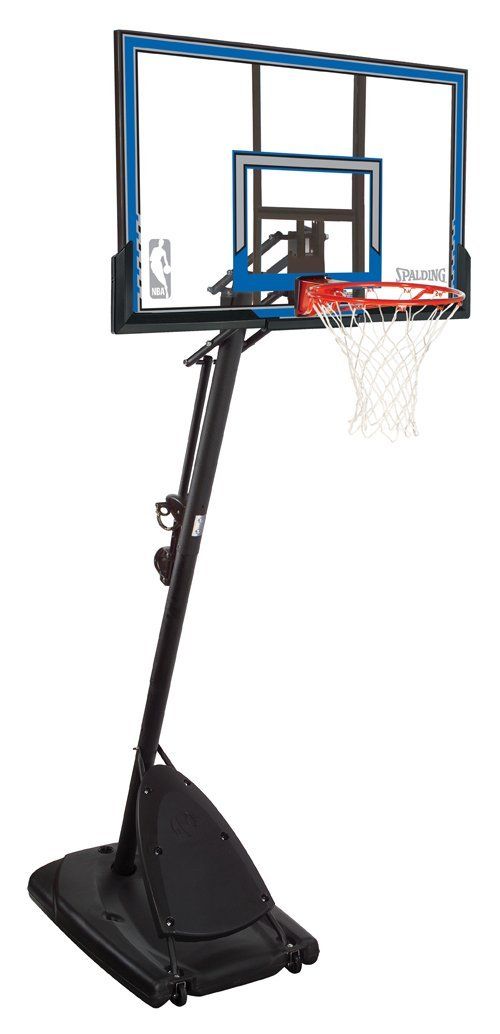
Back to the question: Is moving an in-ground basketball hoop possible? Yes, it is possible to move it, but it’s a job for the professionals. The latest versions of in-ground basketball hoops are designed to have two detachable parts– one is the main part of the basket, and the other is the cement-hardened in-ground base.
You should know that moving an in-ground basketball hoop is expensive. However, if there are no damages to the hoops system, it’s a better option than getting yourself a new one. If you do not have any experience moving these structures, it is always better to call the company that installed the system. Better safe than sorry.
Now, if you had an older model of an in-ground basketball hoop, those are practically immovable, so it’s better to leave these structures alone.
Is it Better to Put Sand or Water in a Basketball Hoop?First things first, if we are talking about putting sand, water, or base gel in a basketball hoop system, we do not mean in-ground basketball hoops. In-ground basketball hoops are hardened by cement and not sand or water. What we are talking about here are portable basketball hoops.
In-ground basketball hoops are hardened by cement and not sand or water. What we are talking about here are portable basketball hoops.
For portable basketball hoops, you have the option to put sand, water, or base gel to solidify the base. In this portion, we will be talking extensively about sand and water, and which is the better choice to put in a portable basketball hoop.
First, let’s examine water as a portable basketball hoops stabilizer. It is the simplest and cheapest option that you have. You’re done in a matter of minutes just by hooking a water hose to the hole in the base. Water is not a bad choice at all because you can quickly drain it from the base.
Here are several things you can do to ensure that the base filled with water holds up over time:
- Add a small amount of bleach to prevent algae from growing in the base.
- If you live in an area with nasty winters, putting a small amount of antifreeze in the water prevents it from solidifying, thereby preventing the plastic base from cracking.

- Water does evaporate, so you need to check the levels once in a while. If a substantial amount of water has evaporated, it will compromise the strength of the base.
- Examine the base for leaks.
Now, what about sand? Sand is denser than water per gallon, so it helps increase the base’s stability. The downside is that it will be much more challenging to move when you need to relocate the hoops system when the time comes.
Another disadvantage of putting sand as a base stabilizer is if it gets wet, it’s a hassle to remove it from the base. Many chose “play sand” over real sand for these purposes since it has a smoother and more even texture.
Based on the pros and cons, is it better to put sand or water in a basketball hoop? Well, it ultimately depends on you and the situation. If you bought the portable hoops system so you can easily move and transport it, water is the better option. If your hoops system is there for keeps, then sand makes the base stronger and more reliable.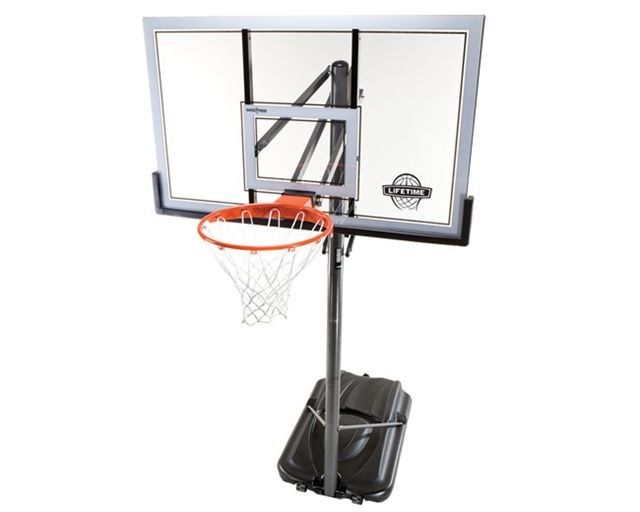
How Many Bags of Sand Do You Need to Fill a Basketball Hoop?Most portable basketball hoops systems have a 35-gallon base. If that’s the case, you will need to purchase ten 50-pound bags of sand to fill the 35-gallon container. Sand weighs about 13 pounds per gallon, so you need to have more or less 455 pounds of sand to fill the base to the brim. Ten 50-pound bags have a total of 500 pounds of sand, so that should be the safest bet.
How Do You Move a Heavy Basketball Hoop?As previously mentioned, moving a basketball hoop is a time-consuming, expensive, and occasionally dangerous undertaking. With that being said, you should think carefully if it’s a good idea to move the basketball hoop. And if you have to relocate it, it may not be a good idea to do it yourself if you don’t have the experience. The rule of thumb is, if it is an in-ground basketball hoop, you better leave it to the professionals.
What about portable basketball hoops? Since they are designed to be “portable,” you and your friends may be able to move them to a different location more often than not.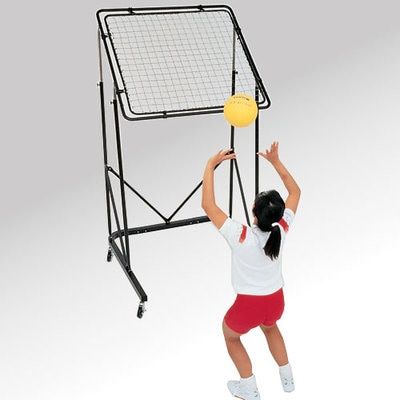 Some portable basketball hoops even have wheels that can be used to move them. If that’s the case, then it’s generally an easy task.
Some portable basketball hoops even have wheels that can be used to move them. If that’s the case, then it’s generally an easy task.
What if your portable basketball hoops system does not have wheels? Here are several things to keep in mind:
- Some portable hoops are designed to fold. If you are not familiar with this feature or don’t know if your hoops system has that characteristic, check the manual.
- As mentioned previously, if you knew in advance that you might have to relocate the hoops in the future, use water as a base stabilizer instead of sand. Water is easier to drain, and in most cases, moving a water-based basketball hoops system may only be a one-person job. If you use sand, then you will surely need help moving the hoops.
- You don’t have to completely empty the base of its content, be it sand or water. There is no possible way to flip the structure upside-down unless you turn green when you’re angry. Just turn the hoops on its side to get some of the weight out.
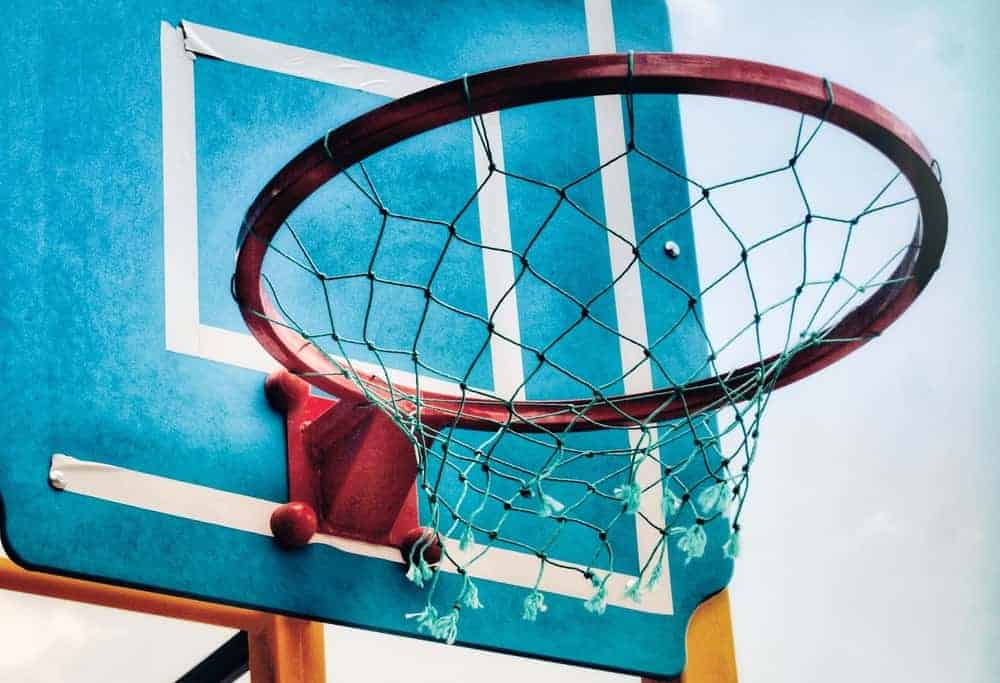
- If the hoops system cannot fold or collapse, then hiring specialists is an option. If it can collapse to a reasonable size, then you may load it on a truck. Just be careful that the rigid metal structure does not smash or scratch the other items.
Things to Consider When Moving a Basketball HoopThe four things above are good reminders when moving a basketball hoop. In summary, you should check if your portable basketball hoop folds to a reasonable size. If you purchased the hoop for temporary use, use water as a base filler. Do not expect that you can completely empty the base of its content, and if you have exhausted all options, it’s time to hire professionals.
Now, what if you need to move the basketball hoop to an entirely different location, perhaps if you’re moving into a new home? Obviously, you just can’t carry it or wheel it off. Here are some more things to consider when moving or transporting a basketball hoop:
1. The first thing you have to do is take a picture of the basketball hoop so you can refer to it as far as putting it all back together in the new location. Make sure that you have a manual, and if you don’t have one, perhaps you can get one online by specifying the model and the make of the basketball hoop.
The first thing you have to do is take a picture of the basketball hoop so you can refer to it as far as putting it all back together in the new location. Make sure that you have a manual, and if you don’t have one, perhaps you can get one online by specifying the model and the make of the basketball hoop.
2. It would be best to disassemble the pieces so that you can easily transport it. Remove the backboard and the rim from the pole and save all the nuts, bolts, and other hardware in small plastic bags. It will also help if you label the bag to readily know where the pieces should be installed.
3. Remove the pole from the base. That should make it three significant pieces (backboard, pole, and base) to package for the relocation.
4. As for removing the contents of the base, you may use a water pump for water and a shop vacuum if you put sand.
5. Wrap the pieces delicately so that it won’t get damaged from the other items on the move. You may use bubble wrap to protect the backboard and the pole. The smaller pieces, such as the rim, should be placed in a box, and the base should be put in a bigger box so it won’t veer around the truck during the travel.
The smaller pieces, such as the rim, should be placed in a box, and the base should be put in a bigger box so it won’t veer around the truck during the travel.
Wrapping Things Up: Moving a Basketball Hoop Filled with SandWhether it’s filled with sand or water, moving a basketball hoop is not an easy task. Most portable hoops weigh from 100 to 500 pounds, so it’s probably not a good idea to do it alone. Add the weight of the material to stabilize the base, and you got yourself a task.
Speaking of the base, is it better to put sand or water in a basketball hoop? Well, both materials have their share of pros and cons, but the deciding factor boils down to the circumstances. Did you buy the portable hoops without the goal of moving to another location? What about the weather in your place? Does the winter get too harsh? If that is so, you may decide to put sand– about 455 pounds worth of it– to fill the base. Otherwise, water is probably the more accessible and more convenient option.
If you decide to move your basketball hoop after deliberation, you need to keep in mind several things. First and foremost, this is not a one-man job. At most, you may need assistance from one or two other individuals or by professionals. If you need to move the hoops to an entirely different location (if you move into a new house, for example), it’s a whole other story. You need to disassemble portable basketball hoop parts– the pole, backboard, and base. Each should be carefully packaged in separate boxes so it won’t get damaged or cause damage to the other items.
If you need help installing ground basketball hoops be sure to also check this article.
More interesting FAQ articles here:
> How to Paint a Basketball Court
> How to Clean a Basketball
> How Many Yards is a Basketball Court?
How to equip a basketball court in the country or in the yard
Basketball develops the child's physical abilities - coordination, endurance, develops strong-willed qualities, concentration, attentiveness and teaches non-standard thinking.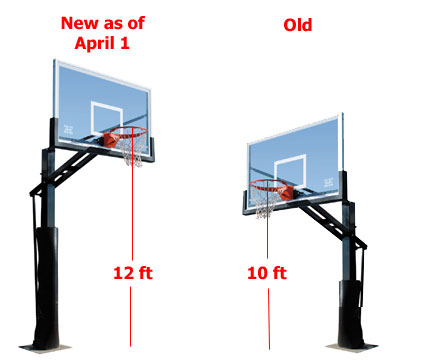 Professionals recommend sending a child to the basketball section from the age of 8-9, but outside the city or in the yard, you can “chase the ball” from an early age.
Professionals recommend sending a child to the basketball section from the age of 8-9, but outside the city or in the yard, you can “chase the ball” from an early age.
I myself equipped a basketball court in my country house and now I am ready to share the secrets of its arrangement. I'll tell you what you need to do, how to choose the right equipment and how to care for it.
Prepare basketball court surface
To create a basketball court in accordance with all the rules, you need to select a flat horizontal surface for it and fill it with concrete. After that, I recommend applying a special rubber coating, like on playgrounds in the yard. There is a more expensive coating option - from rubber.
The coating will provide cushioning - the ball will bounce well.
If it is not possible to organize a special platform, you can simply place a rack or hanging basket on a dirt surface. In this case, the ball bounce will not be so strong.![]() An important requirement for safety: the surface must be flat, without holes and bumps.
An important requirement for safety: the surface must be flat, without holes and bumps.
The dimensions of the site depend on the features of your yard or plot in the country. A full-fledged basketball court has dimensions of 28 × 15 meters. However, not everyone has the opportunity to build such a site in the country.
It is necessary to take into account the technical features of the game. The three-point line in basketball is 6.75 meters from the hoop. Therefore, it is necessary that the size of the site be at least 10 × 13 meters. If you are not going to train three-point shots, a 5 × 5 meter court will do.
Mark out
The second step is to mark up. It is important to use paints of contrasting colors. It is better to buy paints with a high content of rubber or polymer.
If you are equipping a basketball court for children, make the markings bright so that they cheer you up and attract attention. For the game of teenagers and adults, it is better to immediately apply technically correct markings.
Place a small fence or protective net on the site. Thanks to them, you do not have to constantly run after the ball to the other end of the site.
Buy stand or backboard
It is difficult to answer the question of what is better - a basketball stand or a backboard. It all depends on taste, tasks and opportunities. Each of these types of equipment has its pros and cons.
There are two types of racks: mobile and static. The static one is mounted in the ground.
The base of the mobile rack is filled with sand or water - for stability. The main advantage of a mobile rack is that it can be moved from place to place. This is convenient when there is no dedicated basketball court or if you are going to play other games in this area, such as tennis or football.
The main requirement for racks is their stability. It will be much more comfortable and safer to play if you are sure that the stance will withstand a blow of any force.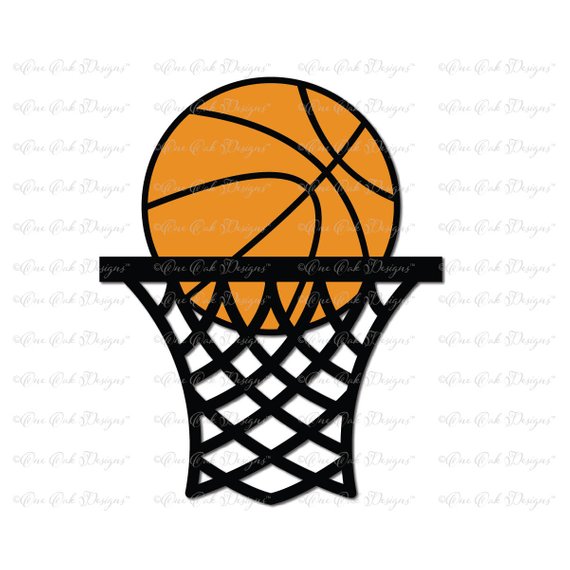
Pay attention to the materials from which the racks are made. A static rack will be outdoors throughout the year, which means it must be made of reliable materials. It is better to buy racks from well-known manufacturers. So, the American companies Spalding or Royal Fitness guarantee high quality, durability and safety.
Basketball backboards can be made in the country with your own hands from a board, chipboard or plywood remnants. If this option does not suit you, you can purchase semi-professional or professional options in stores.
There are four types of materials from which the shield surface is made: composite, polycarbonate, acrylic and tempered glass. The first one is the cheapest. It is intended for entry-level players. Now manufacturers offer a large selection of colors. A carbonate backboard will provide a good bounce of the ball. An acrylic shield is bought to hold competitions or intense games.
The mobile stand can be moved, so it is suitable for a playground in the country and for those who want to play other games besides basketball
Shields and racks made of tempered glass look solid.![]() They will be appreciated by experienced basketball players
They will be appreciated by experienced basketball players
Pay attention to rings
You can buy cheap rings, but I don't recommend doing that. In a year they will deteriorate and you will have to buy new ones. Basketball hoops from Spalding and Royal Fitness are made from quality metal that won't rust in the rain.
The ring must have a springy structure - no rigid attachment to the shield.
According to NBA rules, the ring must be fixed at a distance of about three meters from the ground. For a game with the participation of younger students, it can be hung lower so that it is not very easy to hit it, but at the same time it is quite possible.
Choose rings made from high quality metal to last for many years. For a game involving adults and teenagers, metal chain rings are suitable. They are distinguished by durability and strength.
Know what types of basketballs exist
Success in the game depends on the basketball.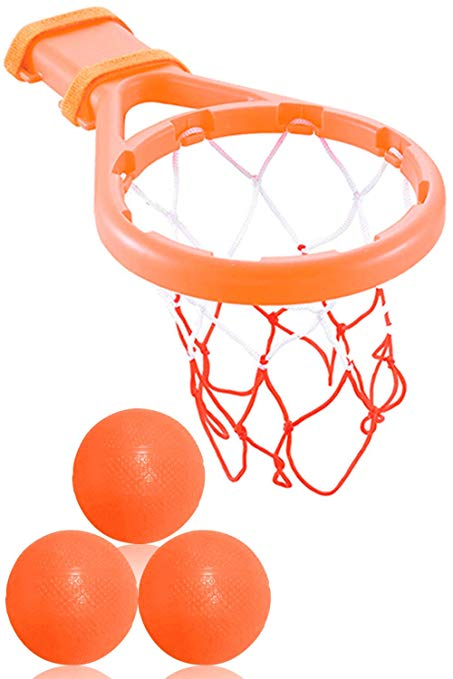
They are divided by size. Size 7 is for men, 5 for women. Even smaller balls are bought for children. The size 6 ball is suitable for street ball or street basketball where the game is played on half the field.
You also need to take into account where you will play the ball: on the street or in the hall. The street ball has a stronger bounce, it is harder and more wear-resistant, but the indoor ball is more convenient to hold in your hands.
It is important to pay attention to the composition of the basketball. Well-known companies use complex polymer compositions for its production. The more expensive the ball, the more complex the polymer composition. The quality of the material determines how comfortable it will be for the players to hold the ball, what kind of rebound it has from the floor and from the bow of the ring.
Another important nuance: do not forget to purchase a pump with any needle.
If you want the ball to have good grip and bounce well, you need to choose polymer models from world famous manufacturers
Proper care
Professional athletes are ready to play in any weather, but amateurs are better off not following their example.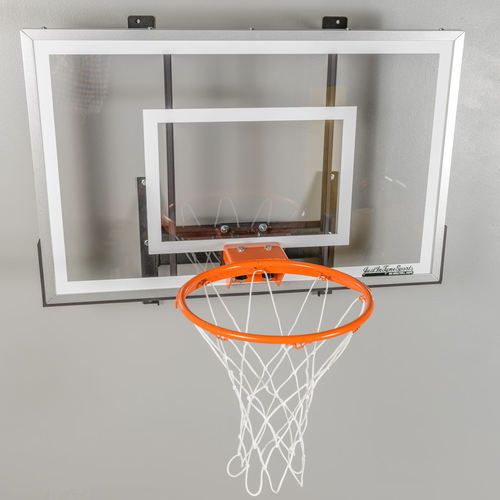 If you don't properly store, use and care for your basketball arsenal, its lifespan will be shortened. Humidity will ruin the ball and all equipment, so you can’t leave them outside during rain and snow.
If you don't properly store, use and care for your basketball arsenal, its lifespan will be shortened. Humidity will ruin the ball and all equipment, so you can’t leave them outside during rain and snow.
Balls should be stored only in a dry and ventilated room at a temperature of 10 to 20 °C.
Before winter storage, water must be poured out of the base of the mobile rack, and then removed from the street. If you don't feel like doing this every time, fill the rack with sand. Then it will not need to be constantly moved. Basketball stands from Royal Fitness can be left outside in the winter.
Points to remember when setting up a basketball court
- The area needs to be determined. The classic version - 28 × 15 meters - is not suitable for everyone. For a dacha, a 5 × 5 meter area will be enough if you want to train three-point shots.
- Don't forget the markup. It should be in a contrasting color. Bright colors will interest children and cheer them up.

- It is necessary to install a protective net so as not to constantly run after the ball to the other end of the area.
- If the shield is stable, then it is safe. A mobile stand from a well-known manufacturer will also not let you down, and it can be moved around the site.
- When choosing a basketball, you need to focus on the players. For games involving children and adults, balls of different sizes are needed.
- If you want a basketball ring that doesn't rot in a year and you don't have to spend money on buying a new one, choose rings from well-known manufacturers made of high quality metal.
- Don't forget about care. Do not leave equipment and inventory on the street. Racks need to be removed to the house for the winter.
Basketball Hoop: Past and Present
Basketball is a game about which you can tell a story with exact numbers and names. At 1891 year in America, in Springfield, Dr. D. Naismith came up with the idea to come up with an outdoor team game.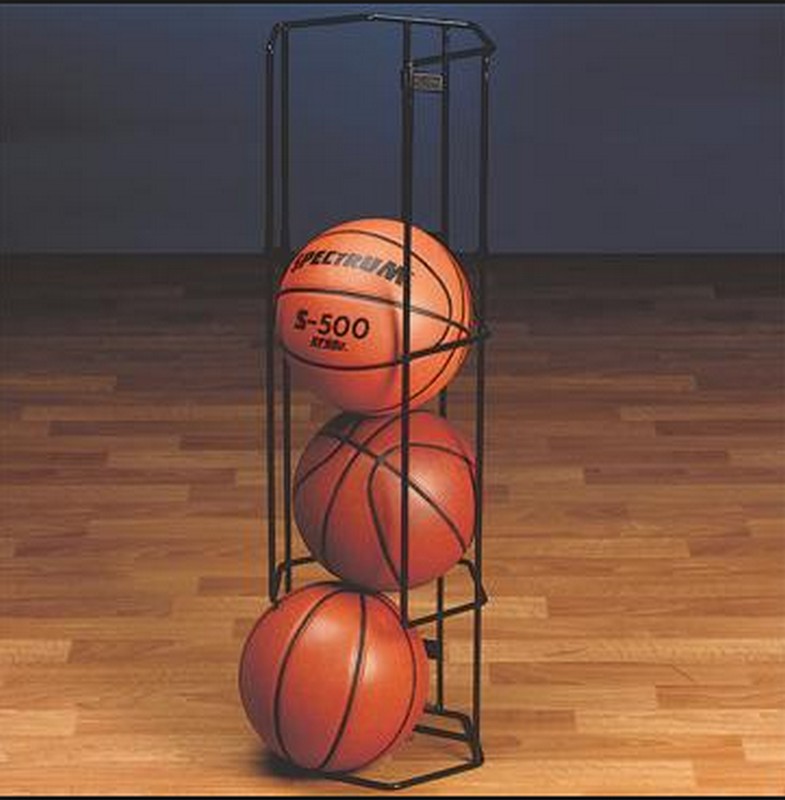 What for?
What for?
Fig. 1. Dr. D. Naismith
Version 1
A Christian Youth Association training center teacher needed a substitute for American football so that they could play indoors in the winter.
Version 2
Naismith wanted to diversify his gymnastics.
The first rules in basketball
In the 19th century, the rules of the game were similar to those of today. Participants of two teams had to throw the ball into baskets located at a height. Each team had its own zone and its own basket. The winner is the one with the most hits in a certain time.
Certain rules for dribbling have been developed. There were fines for violations. The basketball hoop in those days did not have strict size regulations. Traditional fruit containers were used. Later, the bottom disappeared in them for a simple reason: the players were too lazy to get the abandoned balls every time. The balls also did not have an ideal shape.
Photo 1.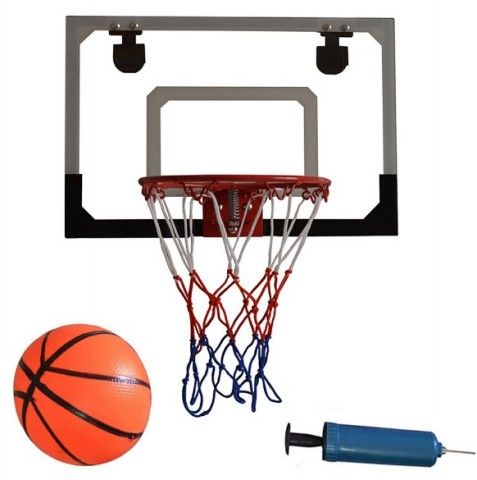 The first basketball baskets
The first basketball baskets
Baskets were hung on balconies. The people who were sitting there prevented the balls from flying in the right direction, so they had to build shields. They became a kind of protection from the fans. Then the players noticed that the ring can be hit when the ball bounces off the backboard, it was entertaining.
Basketball Hoop Dimensions
The dimensions and mounting height of the basketball hoop have not changed much over time. Fruit baskets ceased to be used in 1893. Replaced with metal rings. To avoid disputes over a successful hit, a net was attached to the ring. With her, it became more noticeable whether the ball was in the basket or not. In 1894, uniform basketball rules appeared.
The game quickly spread throughout the world, but in the US it has gained particular popularity. Professional basketball players began to be valued very highly, the cost of some contracts amounted to several dollars just for a minute of the athlete being on the court.![]() The earnings were huge. This gave the players the opportunity to train even more in order to show the highest skill in matches.
The earnings were huge. This gave the players the opportunity to train even more in order to show the highest skill in matches.
For a professional player, the dimensions of the basketball hoop and the height at which it is fixed are important. Constant values allow you to better develop skills in determining the position, strength and trajectory of throws. It was decided to standardize the rules and inventory in 1893. It was then that the rings became only metal and with a grid, and the optimal height was determined.
Photo 2. Modern basketball baskets
Today the parameters are as follows:
- platform 28 x 15 m;
- ceiling height not less than 7 meters;
- lower edge of the shield at a height of 290 cm from the floor;
- shield dimensions 180 x 105 cm;
- basket at a height of 305 cm, i.e. 15 cm above the lower edge of the shield;
- ring diameter 45–45.7 cm;
- diameter steel bar for basketball hoop 16-20mm;
- mesh 450 mm in diameter, with a mesh of 50 mm.
